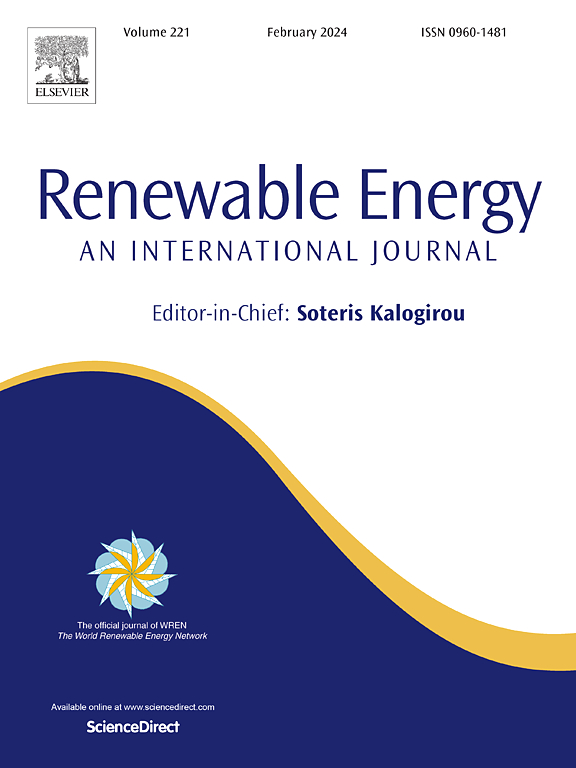Identification of wind inflow characteristics from nacelle lidar measurements in the induction zone of a 9 MW wind turbine
IF 9.1
1区 工程技术
Q1 ENERGY & FUELS
引用次数: 0
Abstract
For large rotor wind turbines, identifying inflow wind characteristics is crucial for their design and operation. During the design stage, anemometers are commonly used to observe wind shear, turbulence spectra, coherence, and turbulence intensity. However, for large wind turbines, anemometers often take measurements below the hub height, leading to discrepancies between actual wind conditions above the hub height and those assumed during the design stage. This makes it challenging to achieve a closed-loop design and compromises the safe operation of large-scale wind turbines. Nacelle-based wind lidar systems can observe wind conditions above and below the hub height in front of the rotor, providing a wind preview for feed-forward control. However, lidar systems designed for feed-forward control often take measurements within the rotor’s induction zone, where wind speeds are lower in regions closer to the rotor. State-of-the-art wind turbine simulations are primarily based on blade element momentum theory. Both wind turbine controller design and load validation require free-stream incoming wind characteristics as input conditions. Therefore, this paper presents a method for identifying free-stream inflow wind characteristics using a lidar system with a maximum measurement distance of 200 m in front of the rotor. The study is based on a 9 MW turbine with a rotor diameter of 230 m and is of great significance for guiding the wind energy industry in both load verification and feed-forward control improvements using nacelle lidar.
9mw风力机诱导区吊舱激光雷达测风特征识别
对于大型转子风力发电机来说,确定入风特性对其设计和运行至关重要。在设计阶段,风速计通常用于观测风切变、湍流谱、相干性和湍流强度。然而,对于大型风力涡轮机,风速计通常采取低于轮毂高度的测量,导致在轮毂高度以上的实际风力条件和设计阶段的假设之间的差异。这使得实现闭环设计具有挑战性,并危及大型风力涡轮机的安全运行。基于机舱的风激光雷达系统可以观察转子前方轮毂高度上下的风况,为前馈控制提供风预览。然而,设计用于前馈控制的激光雷达系统通常在转子感应区进行测量,在那里,靠近转子的区域风速较低。目前的风力机仿真主要基于叶片单元动量理论。风力发电机控制器设计和负荷验证都需要自由流输入风特性作为输入条件。因此,本文提出了一种利用转子前方最大测量距离200 m的激光雷达系统识别自由流入流风特征的方法。该研究以转子直径为230 m的9mw风机为基础,对风电行业利用机舱激光雷达进行负荷验证和前馈控制改进具有重要的指导意义。
本文章由计算机程序翻译,如有差异,请以英文原文为准。
求助全文
约1分钟内获得全文
求助全文
来源期刊

Renewable Energy
工程技术-能源与燃料
CiteScore
18.40
自引率
9.20%
发文量
1955
审稿时长
6.6 months
期刊介绍:
Renewable Energy journal is dedicated to advancing knowledge and disseminating insights on various topics and technologies within renewable energy systems and components. Our mission is to support researchers, engineers, economists, manufacturers, NGOs, associations, and societies in staying updated on new developments in their respective fields and applying alternative energy solutions to current practices.
As an international, multidisciplinary journal in renewable energy engineering and research, we strive to be a premier peer-reviewed platform and a trusted source of original research and reviews in the field of renewable energy. Join us in our endeavor to drive innovation and progress in sustainable energy solutions.
 求助内容:
求助内容: 应助结果提醒方式:
应助结果提醒方式:


